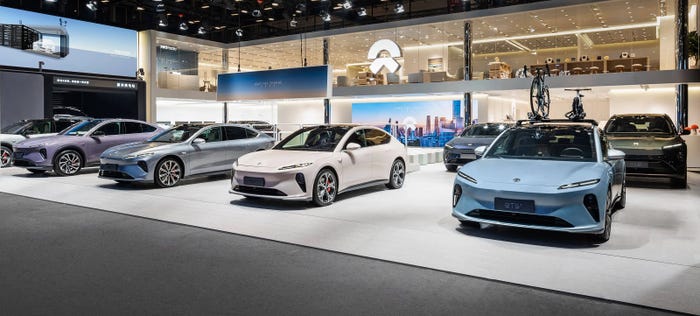Online Image Analysis and Used-Car Transparency
Advanced imaging technology can better inform customers of vehicle issues such as external damage that may not always be clear in the few uploaded images in each online listing.
September 21, 2023

Shopping for books, tech products, clothing and much more has gone online – and auto sales are no exception. Drivers seeking to purchase a used car, as well as individuals seeking to sell one, now have an online option, too: the online auto auction, where sellers can reach potential buyers from across the city, state, or country while buyers get access to a huge selection of vehicles.
“What you see is what you get” is generally the rule for online sales, but you often can’t see what you need to in order to make the most informed decision. When customers bid on and receive a vehicle that is not as represented online – for example, with scratches that may not show up well in online images – they’re likely to be unhappy, to the extent that they may demand reimbursement for the undisclosed damage or, worse, request a full refund and return.
To avoid that, sites can adopt advanced imaging technology, which will enable them to better inform customers of vehicle issues, such as external damage that may not always be clear in the few uploaded images in each online listing.
More car buyers than ever are purchasing vehicles at online auctions. As high prices and high loan interest rates make new cars out of reach for many, and as used-car availability continues to be tight – with prices high there, as well – more consumers are buying vehicles at online-only retailers, where selection is far greater than at local dealers, and prices may be somewhat lower.
Demand is so great that turnover at auction sites – from the time a vehicle is listed until the time it is sold – is often counted in days, if not hours, for quality vehicles. According to industry experts, some 9 million vehicles are sold at online auction sites yearly, providing shoppers with many more choices than they could find at their local used-car lot. But unlike at the lot, buyers have to rely on the data and images supplied by the seller.
Of course, online sites require sellers – whether they are individual or used-car agents – to provide a history of the vehicle, information on damage, accidents, repairs and anything else that could affect the vehicle’s price. Auction sites will disclose that information to buyers, who can expect to pay less for a car that has, for example, been in an accident. And while sites do their best to keep sellers honest, they can’t always ensure that they catch every detail. One thing they can do to catch those details, however, is using advanced image technology, which will highlight issues that sometimes even the seller may not be aware of.
Applying this technology may sound like a good idea, but not a necessary one; after all, all vehicles sold on auction sites will carry a clear history. But if a detail does get overlooked, it could cost the site; a dissatisfied customer who gets stuck with a car that doesn’t match up with the images posted on the site may just return the vehicle (with transport costs borne by the site).
Using high-res cameras and advanced data analysis, inspection services can provide in-depth data on the state of a vehicle, including whether it experienced an accident or other damage. Inspection can also be done remotely from mobile-phone cameras.
Indianapolis Car Exchange, a dealer-focused auction company, recently implemented such technology to increase transparency and buyer confidence in online sales. For accident damage, cameras can detect very subtle shade differences in paint, or whether the paint’s patina matches the reported model year or vehicle age – indicating that part or even all of the vehicle was repainted.
Images of bumpers, fenders or external parts like mufflers could indicate they were replaced – and with machine learning, systems can analyze the condition of the entire vehicle compared to the replacement part to indicate why that part was replaced.

Jim O'Brien Headshot (002)
For flood damage, images can detect subtle signs of rust, or whether there is sand or other material embedded in bumpers, fenders or decorative piping. These are issues that a human inspector would be unlikely to pick up on.With such analysis, the consumer can get a full report within seconds, enabling them to decide quickly whether to bid on a vehicle or move on to the next one. With this advanced technology, vehicle buyers who shop at online auction sites will be able to get the cars they need at a price that’s right for them – and auction sites can ensure that their customers drive away happy.
Jim ’O’Brien (pictured, above left) is general manager, North America, at Ravin.ai, which makes a computer vision-powered car inspection platform.



